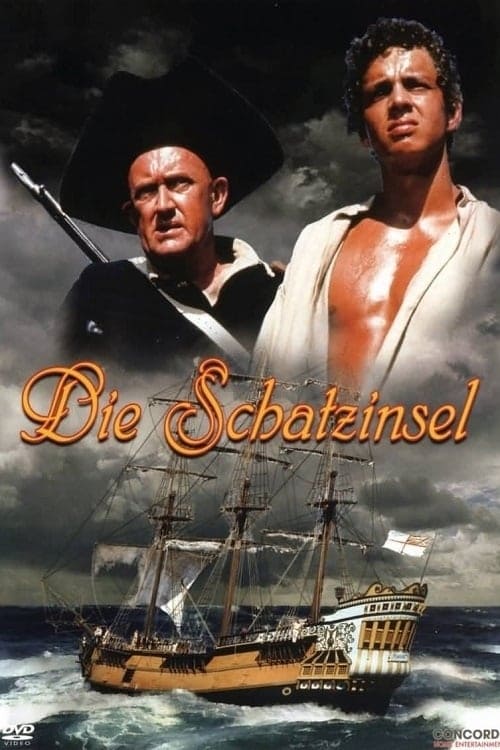## **Die Schatzinsel (1966) Review: A Gritty, East German Gem of Classic Adventure**
Before the era of CGI spectacle and postmodern deconstruction, there was a time when adventure stories were told with stark realism, moral clarity, and a palpable sense of danger. The 1966 East German-Czechoslovak co-production of *Die Schatzinsel* (Treasure Island) captures this spirit perfectly. It is a faithful, atmospheric, and surprisingly gritty adaptation of Robert Louis Stevenson's classic novel that stands as a unique and worthy entry in the vast canon of Treasure Island films.
### A Faithful, Yet Distinct, Interpretation
Directed by Wolfgang Liebeneiner, this version distinguishes itself immediately with its commitment to a darker, more serious tone. Unlike some of its more swashbuckling, Hollywood counterparts, this film leans into the story's inherent themes of greed, betrayal, and survival. The cinematography is often stark and shadowy, with the island itself feeling less like a tropical paradise and more like a damp, treacherous prison. This aesthetic, born from the Eastern European cinematic tradition, lends the tale a weight and authenticity that is deeply compelling.
### Cast and Characters: Grounded and Menacing
The heart of any *Treasure Island* adaptation lies in the dynamic between Jim Hawkins and Long John Silver. This film excels on both fronts.
* **Long John Silver (Alfred Müller):** Müller's Silver is a masterclass in subtle menace. He is not a cartoonish villain but a complex, calculating, and deeply pragmatic man. His famous charisma is present, but it's underpinned by a constant, visible cunning that makes him genuinely unpredictable and threatening. You believe he is capable of both fatherly affection and cold-blooded murder.
* **Jim Hawkins (Milan Kňažko):** The young Jim is portrayed with a fitting blend of wide-eyed innocence and burgeoning courage. His journey from an innkeeper's boy to a key player in a life-or-death struggle feels earned and believable.
The supporting cast, including the stern Captain Smollett and the doomed Captain Arrow, are all portrayed with a grounded seriousness that reinforces the film's overall tone.
### The Verdict: A Classic, Faithfully Rendered
**8/10 - A Must-See for Classic Adventure Aficionados**
*Die Schatzinsel* (1966) may lack the glossy sheen of big-budget productions, but it more than compensates with its atmospheric direction, strong performances, and unwavering commitment to the darker soul of Stevenson's source material. It is a film that respects its audience—both young and old—by not shying away from the story's moral complexities.
**Watch it if:** You are a fan of classic literature adaptations; you appreciate gritty, atmospheric cinema from the 1960s; or you are looking for a *Treasure Island* that feels more authentic and less Hollywood-polished.
**Skip it if:** You require fast-paced, high-energy swashbuckling with a heroic, romanticised gloss.
This is a treasure in its own right. A robust, intelligent, and highly satisfying rendition of a timeless tale.

